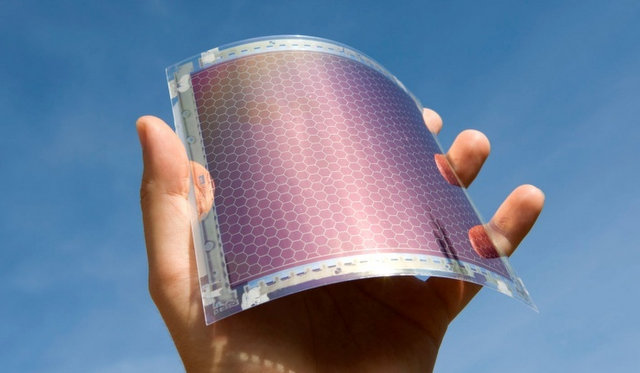Phone:
(701)814-6992
Physical address:
6296 Donnelly Plaza
Ratkeville, Bahamas.


Are you curious about the next big step in solar energy technology? Organic photovoltaics (OPV) could redefine how we harness and use the power of the sun. Unlike traditional silicon-based solar panels, OPVs offer flexibility, low production costs, and endless possibilities for integration into everyday materials like windows, walls, and even wearable electronics.
This blog will guide you through everything you need to know about organic photovoltaic cells—from how they work to their benefits, practical applications, and what lies ahead for this exciting technology.
Organic photovoltaic cells, also known as organic solar cells, are a type of solar technology that uses carbon-based molecules to convert sunlight into electricity via the photovoltaic effect.
These molecules are solution-processable and can be manufactured at high throughput, making OPVs much cheaper to produce than traditional silicon solar cells. Organic solar cells are lightweight, flexible, and even transparent, which allows them to be integrated into unconventional applications like windows, flexible devices, and wearable tech.
However, OPVs also come with some challenges. Compared to traditional solar cells, they have lower efficiency, weaker stability, and reduced durability. But advancements in materials and engineering are rapidly addressing these drawbacks, making OPVs an increasingly viable option for real-world use.
Though they differ in materials, organic solar cells operate similarly to silicon-based cells, relying on the photovoltaic effect.
Here’s a step-by-step breakdown of how they work:
When sunlight hits the organic absorber layer, it excites electrons. These electrons jump from the highest occupied molecular orbital (HOMO) to the lowest unoccupied molecular orbital (LUMO), creating electron-hole pairs, also known as excitons.
To generate electricity, these excitons need to be split. This is achieved using donor and acceptor materials. The donor material donates electrons, while the acceptor captures them, resulting in electrical charge flow.
Once separated, the electrons flow through the circuit, creating an electric current that can power devices or feed into the grid.
The unique behavior of carbon-based semiconductors is what allows organic solar cells to be flexible, cost-effective, and versatile. This makes the technology ideal for applications that go beyond traditional solar panels.
Why are organic photovoltaics generating so much excitement in the renewable energy industry? Here are the key benefits:
OPVs are incredibly lightweight and can conform to curved or uneven surfaces. This flexibility makes them ideal for innovative uses like wearable devices or solar-powered car panels.
Thanks to their solution-processable structure, organic materials used in OPVs are cheap to produce. Fabrication techniques like inkjet printing or roll-to-roll manufacturing allow for high-volume, cost-effective production.
OPVs offer a sustainable way to harness solar energy. Their materials are readily available and require less-intensive manufacturing processes compared to silicon-based solar cells.
Transparent and semi-transparent OPVs open entirely new doors for solar energy integration. From electricity-generating building windows to wearable electronics, the possibilities are endless.
Organic solar cells consist of the following layers or components:
Made from organic semiconductors, the active layer is where sunlight is absorbed, and electricity is generated. It typically consists of a donor material and an acceptor material mixed to form a bulk heterojunction.
The anode and cathode are responsible for collecting electrical charges. The interfaces between these electrodes and the active layer are critical for overall efficiency.
This serves as the foundation of the solar cell and can be flexible or rigid, depending on the application.
Each of these components plays a role in determining the device’s efficiency, durability, and suitability for various applications.
One of the most exciting aspects of OPVs is their flexibility, which opens the door to a wide range of renewable energy applications:
Imagine solar panels seamlessly embedded into a building’s windows or facades. Transparent OPVs could enable this future by generating energy without sacrificing design.
Lightweight and flexible organic solar cells can be integrated into clothing, backpacks, and other wearable devices, ensuring on-the-go energy for small gadgets.
For camping or emergency kits, flexible organic solar panels could be used to charge devices like smartphones and power banks.
OPVs’ high power-to-weight ratio makes them promising candidates for space exploration, where weight savings are critical.
While organic solar cells have enormous potential, improving their efficiency and durability remains a top priority for researchers. Some key areas of focus include:
The development of non-fullerene acceptors and high-performance polymers is enhancing the efficiency and stability of OPVs.
Combining organic materials with perovskites could lead to hybrid solar cells with superior capabilities.
Machine learning tools are being employed to analyze data and optimize the design of organic solar cells for maximum performance.
Advancements in roll-to-roll manufacturing will soon enable organic solar cells to be produced on a commercial scale, bringing down costs even further.
By addressing these challenges, organic photovoltaics could transition from an emerging technology to a mainstream solution for renewable energy production.
Organic photovoltaics are more than just an exciting innovation. They represent a shift toward a sustainable, flexible, and accessible approach to renewable energy.
For renewable enthusiasts and scientists alike, OPVs offer an inspiring glimpse into the future of solar power. With continuous research and development, this technology could revolutionize how we interact with energy in our everyday lives.
Organic photovoltaics might just redefine renewable energy. Want to stay updated on cutting-edge advancements? Bookmark this page, or share it with fellow renewable energy enthusiasts. Together, we can power the path toward sustainability and innovation.